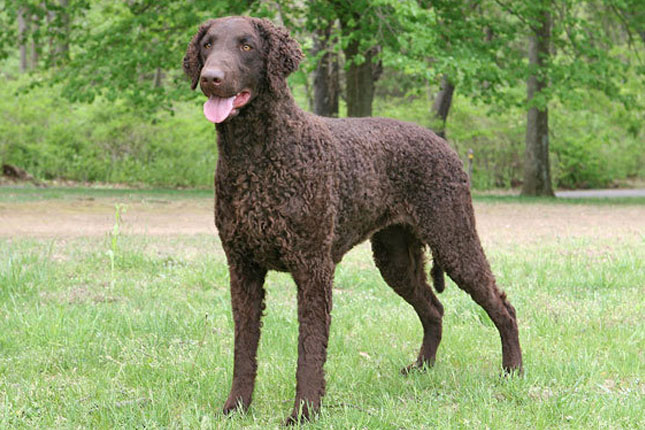
The Breed History
The Curly-coated retriever is thought to be derived from
Retrieving Setter and English Water Spaniel stock, the St. John's
Newfoundland, and perhaps also the Poodle and Irish Water
Spaniel. "Curlys" are one of the earliest known breeds of the
retriever group, and early breed development occurred in Britain.
The breed type was considered set by about 1850. During the
two World Wars, and up until the 1960s the breed was close to
extinction. The first breed specimens likely arrived in America in
1907. This is still a rare breed.
Breeding for Function
These dual-purpose dogs were particularly effective soft-mouth
waterfowl retrievers used for duck, quail and other fowl. The coat
was carefully bred for, so that they could withstand cold water
hunting and heavy underbrush.
Physical Characteristics
Height at Withers: female 23-25" (58.5-63.5 cm), male 25-27"
(63.5-68.5 cm).
Weight: 70-80 lb (32-36 kg).
Coat: The distinctive curly dense coat is made up of an outer coat
with discrete short tight curls, though straight shorter hair is found
on the face, feet and the pinna hair covering is intermediate in curl.
Accepted coat colors are black and liver. Very small white patches
are allowed. Black is dominant, liver is recessive in inheritance.
Rare yellows occur but are not an accepted breed color. Has low
grooming needs except during shedding times; the coat does not
need trimming. Some breeders rarely or never brush these dogs but
just periodically bathe them.
Longevity: 10-13 years
Points of Conformation: High head carriage, a distinct, tightly
curled water-resistant coat, slightly longer than tall conformation
characterize the Curly-coated Retriever. They possess moderate
muscling and bone. The wedge-shaped head is more narrow,
refined, with the muzzle tapering more than with the other
retrievers. The stop is shallow, and the almond shaped eyes are
black, brown or amber. The large nose is black or brown. The small
ears are folded and close lying, with heavy leather. The neck is
moderate in length, and not throaty. The topline is level, with
a slight slope downward at the croup. The thorax is deep and
moderately sprung ribs stay full towards the rear of the rib cage.
The abdomen is moderately tucked up. The tail is straight, thick,
tapering and reaches to the tarsus. Limbs are straight boned,
and the feet are round with well-knuckled toes. Metacarpals and
metatarsals are short. The dewclaws on the forelimb are often
removed, and the ones on the hind limbs are usually removed. The
dog moves with a long stride, with agility, speed and smoothness.
Recognized Behavior Issues and Traits
Reported breed characteristics include: Willing to please, calm
and affectionate, hardy, high trainability, a good guard dog. He
is noted to persevere in the field during a hunt. A Curly may be
somewhat aloof with strangers. Slow to mature, some also have
an independent streak. Early socialization and obedience training is
recommended. A low activity level around the home, but typically
has high exercise needs. Not recommended for apartment living.
The Curly-coated Retriever needs close human companionship.
Normal Physiologic Variations
The coat tends to be oily so bathing 3 or 4 times a year is
recommended as a minimum.
Drug Sensitivities
None reported
Inherited Diseases
Hip Dysplasia: Polygenically inherited trait causing degenerative
joint disease and hip arthritis. OFA reports 15.3% affected.
Elbow Dysplasia: Polygenically inherited trait causing elbow
arthritis. OFA reports 0.5% affected.
Patella Luxation: Polygenically inherited laxity of patellar
ligaments, causing luxation, lameness, and later degenerative
joint disease. Treat surgically if causing clinical signs. Too few
Curly-coated Retrievers have been screened by OFA to determine an
accurate frequency.
Glycogenosis Type IIIa (Glycogen Storage Disease, GSD): An
autosomal recessive inherited metabolic disorder that causes liver
and skeletal muscle disease due to deficiency of the glycogen
debranching enzyme (GDE) and tissue storage of abnormally
structured glycogen. Clinical signs include episodic exercise
intolerance, collapse, and lethargy. This disorder was discovered
in an extended family of Curly-coated Retrievers (CCR), with
representative cases from USA, Canada, and New Zealand. A genetic
test is available and shows 0.5% affected and 8.7% carrier.
Exercise Induced Collapse (EIC, Dynamin 1 Mutation): An
autosomal recessive disorder of muscle weakness, incoordination
and life threatening collapse accompanied by hyperthermia after
just five to fifteen minutes of intense exercise or excitement. After
10 to 30 minutes of rest, most dogs return to normal. Limited
genetic testing reveals over 10% carrier Curly Coated Retrievers. A
direct genetic test is available.
Disease Predispositions
Hypothyroidism: Inherited autoimmune thyroiditis. 7.3% positive
for thyroid auto-antibodies based on testing at Michigan State
University. (Ave. for all breeds is 7.5%).
Distichiasis: Abnormally placed eyelashes that irritate the cornea
and conjunctiva. Can cause secondary corneal ulceration. Identified
in 7.64% of Curly Coated Retrievers CERF examined by veterinary
ophthalmologists between 2000-2005.
Persistent Pupillary Membranes: Strands of fetal remnant
connecting; iris to iris, cornea, lens, or involving sheets of tissue.
The later three forms can impair vision, and dogs affected with
these forms should not be bred. Identified in 3.82% of Curly Coated
Retrievers CERF examined by veterinary ophthalmologists between
2000-2005.
Cataracts: The breed can develop anterior subcapsular striate
cortical cataracts between 5-8 years of age, and posterior
subcapsular cataracts at 2-4 years of age. Other forms of cataracts
also occur in the breed. Identified in 3.64% of Curly Coated
Retrievers CERF examined by veterinary ophthalmologists between
2000-2005. CERF does not recommend breeding any Curly Coated
Retriever with a cataract.
Follicular Dysplasia (Patterned Baldness): Inherited, non-inflammatory,
truncal, symmetrical, cyclic hair loss. Melatonin may allow
regrowth. Unknown mode of inheritance.
Vitreous Degeneration: Liquefaction of the vitreous gel which
may predispose to retinal detachment. Identified in 2.18% of Curly
Coated Retrievers CERF examined by veterinary ophthalmologists
between 2000-2005.
Gastric Dilatation-Volvulus (bloat, GDV): Polygenically inherited,
life-threatening twisting of the stomach within the abdomen.
Requires immediate treatment. Reported at an increased frequency
in the breed.
Subaortic Stenosis (SAS) and Tricuspid Valve Dysplasia (TVD):
Both polygenically inherited heart disorders have been identified
in families of Curly Coated Retrievers. Can lead to congestive heart
failure. Diagnose with echocardiography.
Coat dilution alopecia, Corneal Dystrophy, Ectropion, Entropion,
Progressive Retinal Atrophy, Retinal Dysplasia, and von
Willebrand's Disease are reported.
Isolated Case Studies
Mast Cell Leukemia: A seven-year-old female Curly-coated
Retriever presented with acute circulatory collapse, emesis, diarrhea,
abdominal enlargement, icterus, cyanosis, dyspnea, pulmonary
edema, hepatomegaly, ascites, and right ventricular enlargement.
Hematologic and biochemical examinations revealed mast cell
leukemia, mature neutrophilia, monocytosis, thrombocytopenia,
hemolytic hyperbilirubinemia, hyperhistaminemia, renal and hepatic
injuries. Mast cells were distributed systemically, but predominantly
in the diaphragm and liver with a large mass among the serosa of
ileum, cecum and colon.
Genetic Tests
Tests of Genotype: Direct test for GSD IIIa is available from the
Fyfe Lab at Michigan State University http://mmg.msu.edu/faculty/
fyfe.htm (517-355-6463x1559).
Direct test for presence of black and liver coat colors, and black and
brown nose is available from HealthGene and VetGen.
Tests of Phenotype: CHIC Certification: Required testing includes
hip radiographs, congenital cardiac evaluation by a cadiologist,
and CERF eye examination. Optional recommended tests are; elbow
radiographs, and direct GSD IIIa test. (See CHIC website; www.
caninehealthinfo.org).
Recommend thyroid profile, including autoantibodies, and patella
evaluation.
Miscellaneous
- Breed name synonyms: Curly, Curly-coat Retriever.
- Registries: AKC, UKC, CKC, KCGB (Kennel Club of Great Britain),
ANKC (Australian National Kennel Club), NKC (National Kennel Club).
- AKC rank (year 2008): 138 (129 dogs registered)
- Internet resources: The Curly Coated Retriever Club of America:
www.ccrca.org
Curly Coated Retriever Club of Canada:
www.angelfire.com/ny/curlycoat/CCRCC.html
Curly Coated Retriever Club (UK):
www.curlycoatedretrieverclub.co.uk
Photo Gallery of Breed - Curly-Coated Retriever - Dog Breed
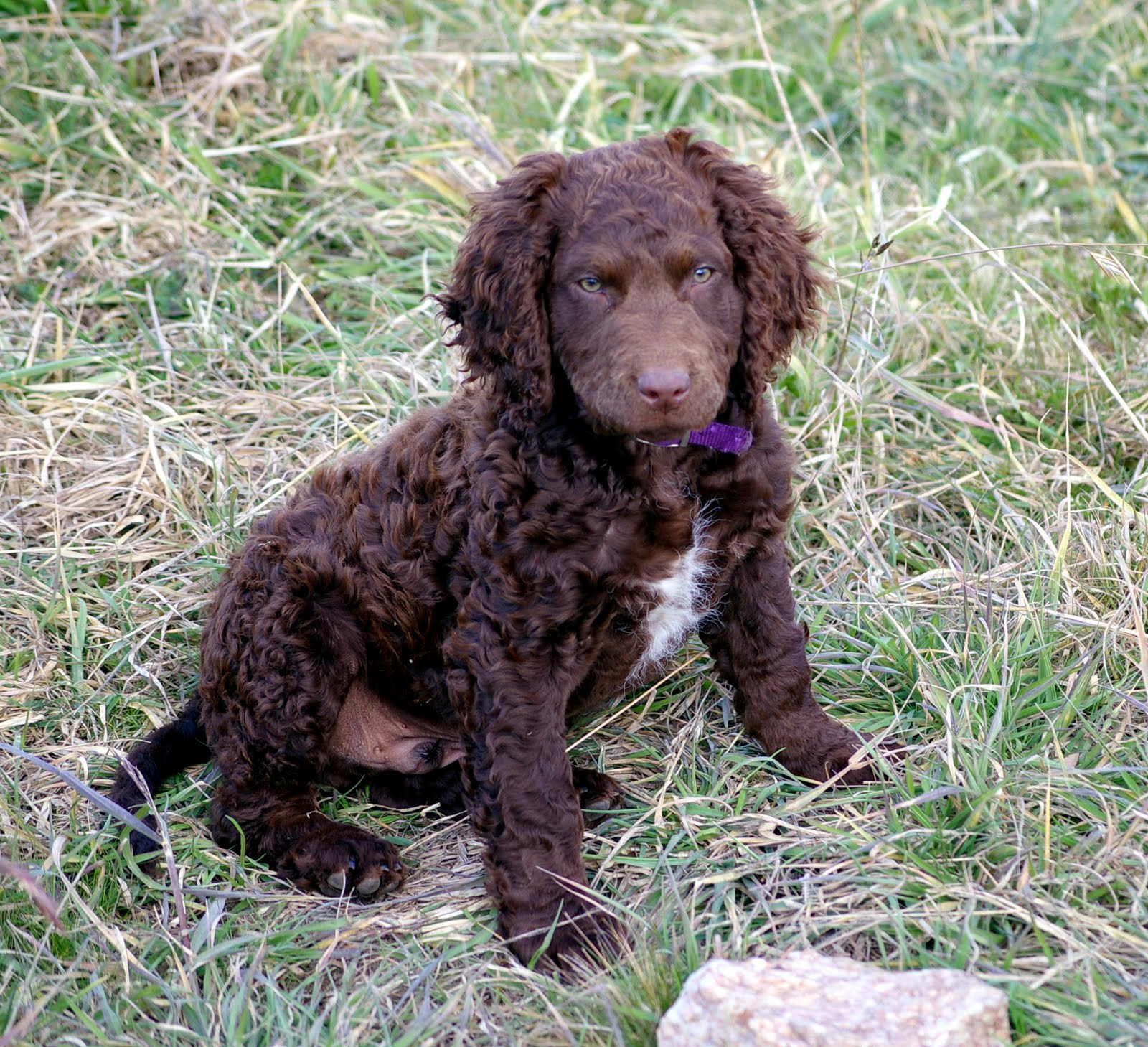
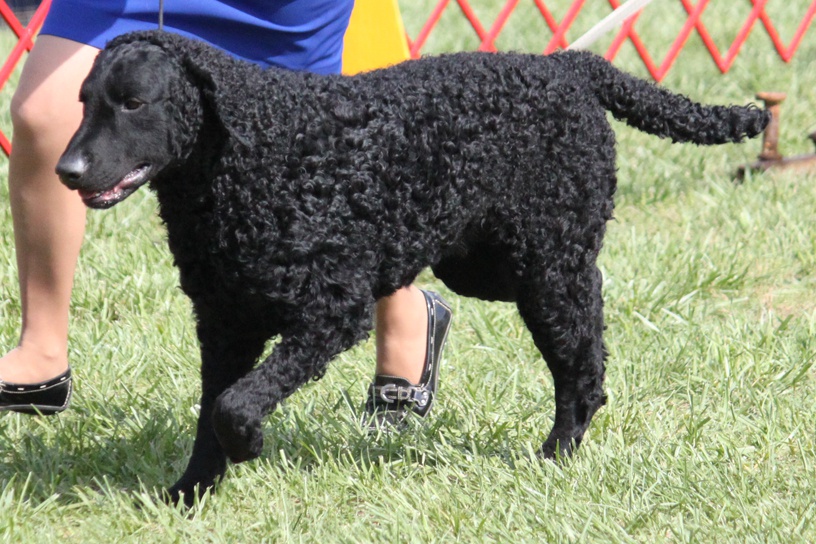
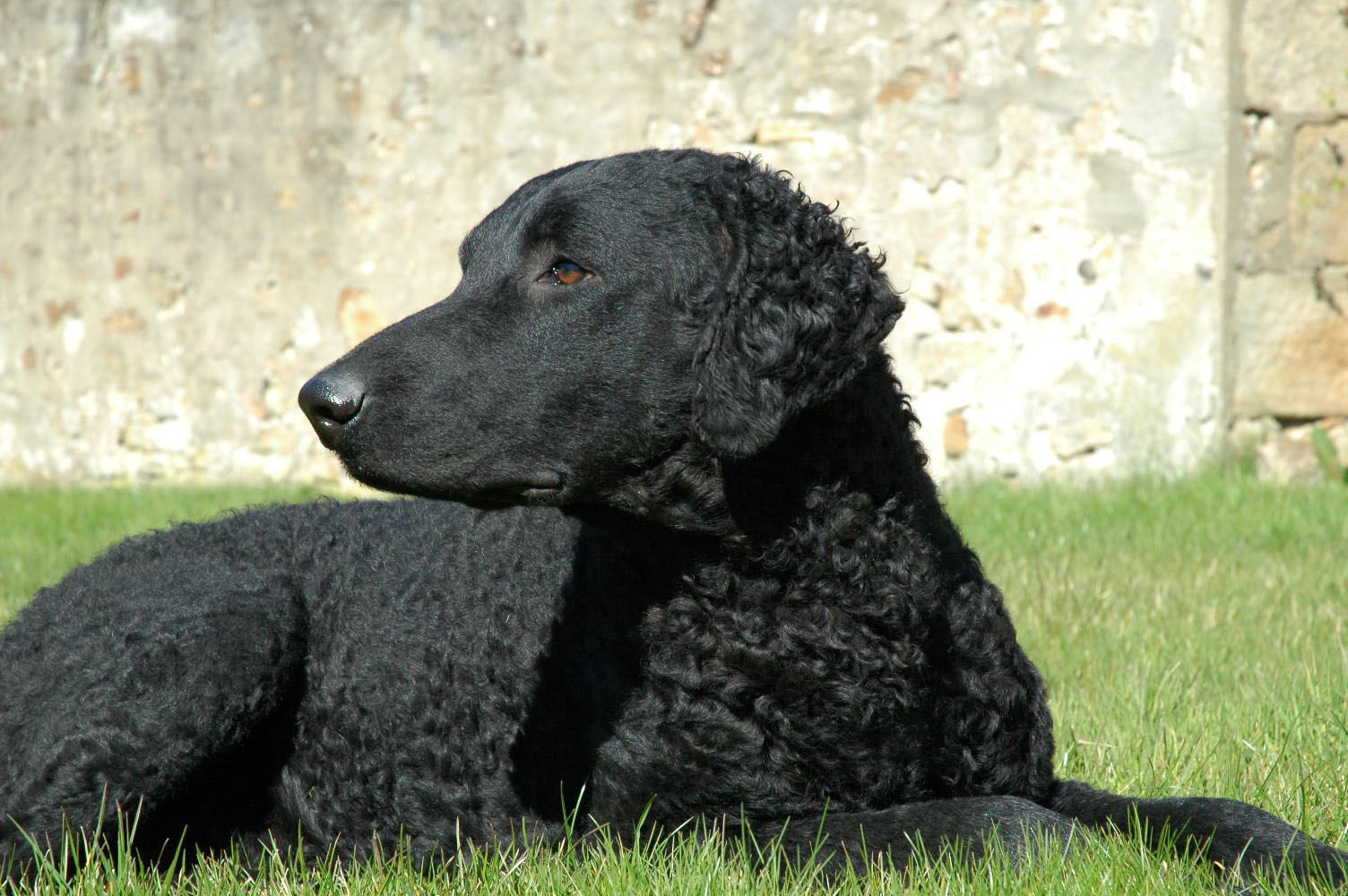
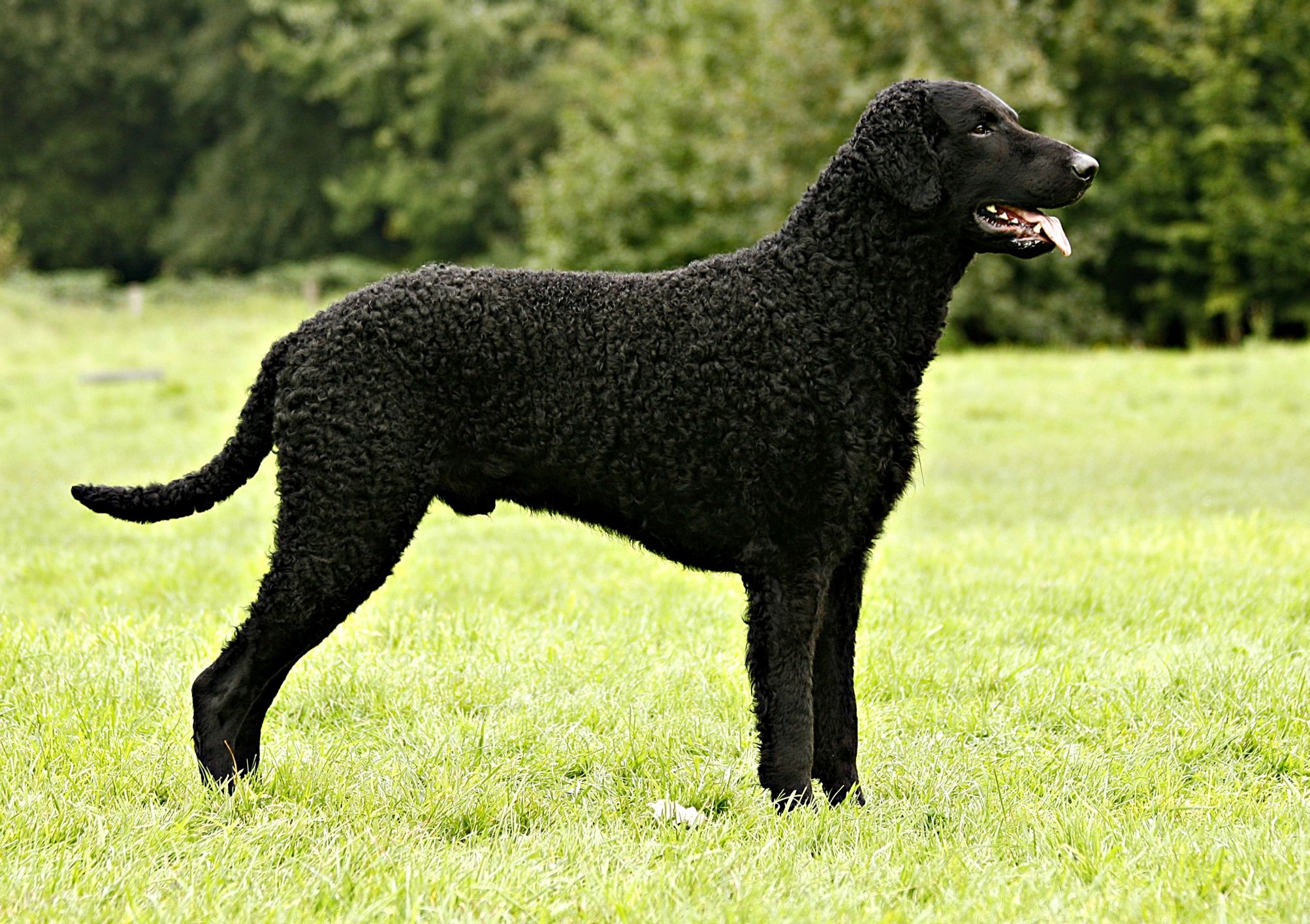



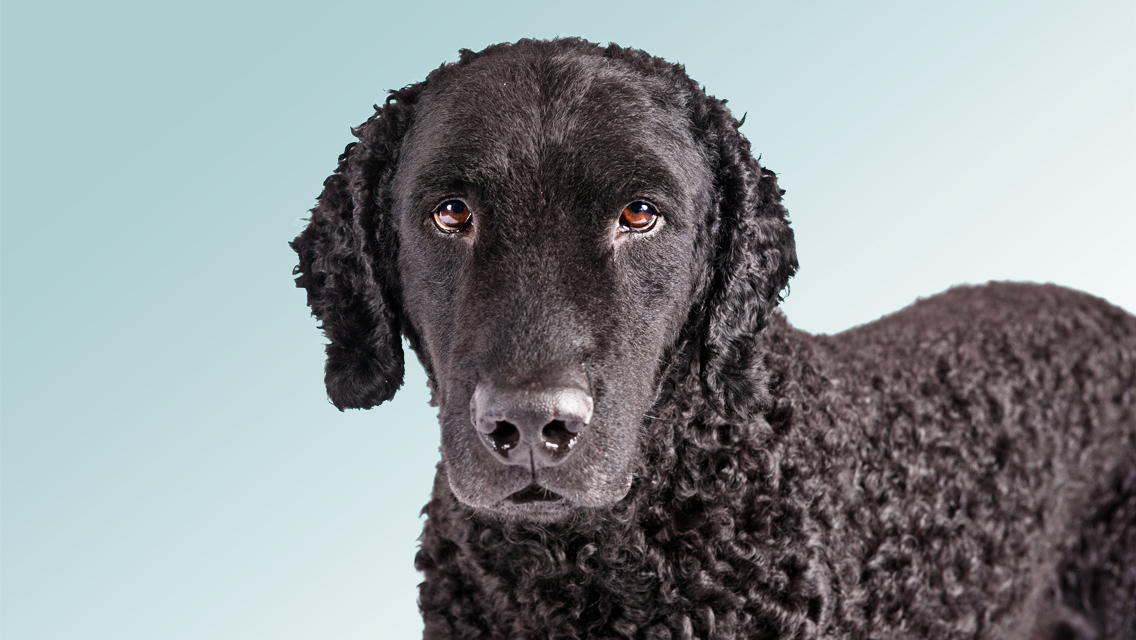
 Animalia Life
Animalia Life